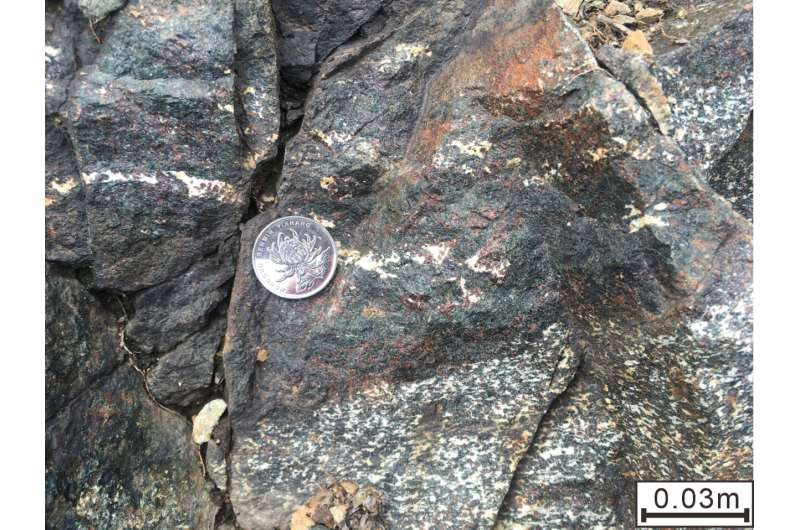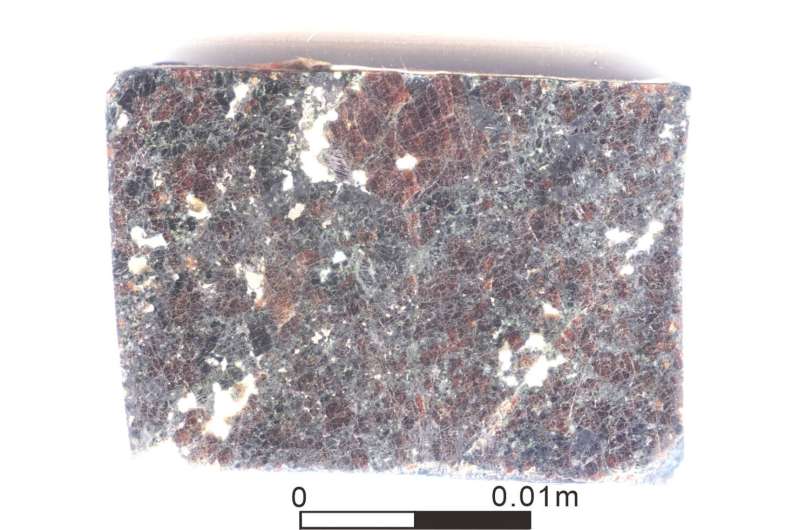April 20, 2022 report
Eclogite samples found in China push modern-type subduction events back to 2.5 billion years ago

A team of researchers from China University of Geosciences, has concluded that eclogite samples found at the northern Central Orogenic Belt within the North China Craton, show that modern-type subduction events occurred on Earth as far back as 2.5 billion years ago. They published their work in Proceedings of the National Academy of Sciences.
As the researchers note, Earth scientists have not been able to pinpoint the time period when modern-type subduction events began occurring. Many have suggested that it likely began approximately 2.1 billion years ago because no evidence of it occurring any earlier than that has been found. In this new effort, the researchers have found evidence showing that it goes back at least 2.5 billion years.
Prior research has shown that eclogite forms when one of the planet's tectonic plates slides under another. Researchers at China University of Geosciences have been studying Archean eon rocks in the Central Orogenic Belt for approximately 20 years. The site runs for approximately 1,600 kilometers. Such work has shown that the mountain belt was formed due to subduction events. Researchers there have, for example, found ophiolites in the rock—evidence that the material once resided on the ocean floor. They have also found mélanges in spots that appear to be the meeting point between plates. But it was study of eclogites found at the site by this most recent team that showed evidence of modern-type subduction events occurring at least 2.5 billion years ago. Analysis of the samples also showed evidence of metamorphosis as the rock changed due to the heat and pressure of the subduction event.

The researchers found that the eclogite samples were originally formed as part of an ocean ridge that moved until reaching the subduction zone. After being pushed under a plate, the rock was exposed to temperatures between 792 and 890 C° and pressure as high as 19.8 to 24.5 kilobars. Such numbers suggested the rock had been pushed as far down as 65 km below the surface before later being pushed back up to the surface.
More information: Wenbin Ning et al, Archean eclogite-facies oceanic crust indicates modern-style plate tectonics, Proceedings of the National Academy of Sciences (2022). DOI: 10.1073/pnas.2117529119
Journal information: Proceedings of the National Academy of Sciences
© 2022 Science X Network




















